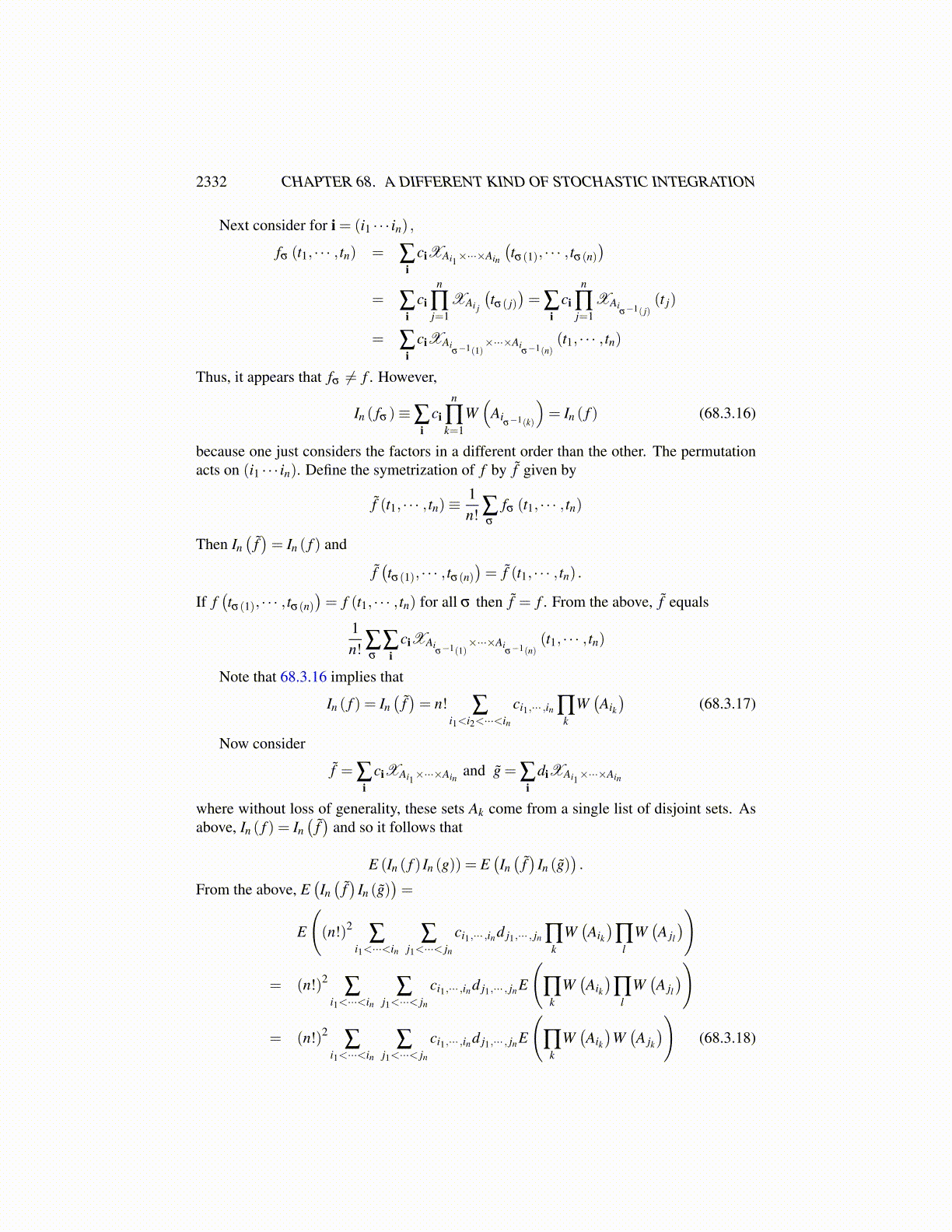
2332 CHAPTER 68. A DIFFERENT KIND OF STOCHASTIC INTEGRATION
It is supposed to equal
∑σ∈Sn
cσ(1)···σ(n)XAσ(1)×···×Aσ(n) (t1, · · · , tn)
= ∑σ∈Sn
cβ−1
σ(1)···β−1σ(n)XA
β−1σ(1)×···×A
β−1σ(n)(t1, · · · , tn) (68.3.13)
Thus
∑σ∈Sn
cσ(1)···σ(n)XAβ−1σ(1)
×···×Aβ−1σ(n)
(t1, · · · , tn)
= ∑σ∈Sn
cβ−1
σ(1)···β−1σ(n)XA
β−1σ(1)×···×A
β−1σ(n)(t1, · · · , tn) (68.3.14)
Since the sets Ak are distinct, as explained above, this requires that
XAσ(1)×···×Aσ(n) ̸= XAα(1)×···×Aα(n)
if α ̸= σ . Therefore, 68.3.14 requires that for all β and each σ ,
cσ(1)···σ(n) = cβ−1
σ(1)···β−1σ(n)
In particular, this is true if β = σ and so cσ(1)···σ(n) = c1···n.The converse of this is also clear. If cσ(1)···σ(n) = c1···n for each σ , then
f(tβ (1), · · · , tβ (n)
)= ∑
σ∈Sn
cσ(1)···σ(n)XAσ(1)×···×Aσ(n)
(tβ (1), · · · , tβ (n)
)= ∑
σ∈Sn
cσ(1)···σ(n)XAβ−1σ(1)
×···×Aβ−1σ(n)
(t1, · · · , tn)
= ∑σ∈Sn
c1···nXAβ−1σ(1)
×···×Aβ−1σ(n)
(t1, · · · , tn)
= ∑α∈Sn
c1···nXAα(1)×···×Aα(n) (t1, · · · , tn)
= ∑α∈Sn
cα(1)···α(n)XAα(1)×···×Aα(n) (t1, · · · , tn)
= f (t1, · · · , tn)
Observe that En is a vector space because if you have two such functions
∑i
ciXAi1×···×Ain(t1, · · · , tn) ,∑
idiXBi1×···×Bin
(t1, · · · , tn)
where the Aik are from {A1,A2, · · · ,Am} and the Bik are from{
B1,B2, · · · ,Bq}
. Then con-sider the single list consisting of the sets of the form Ak∩B j. You could write each of thesefunctions in terms of indicator functions of products of these disjoint sets. Thus the sum ofthe two functions can be written in the desired form. Since each are equal to 0 when somet j = tk, the same is true of their sum. Thus En is closed with respect to sums. It is obviously